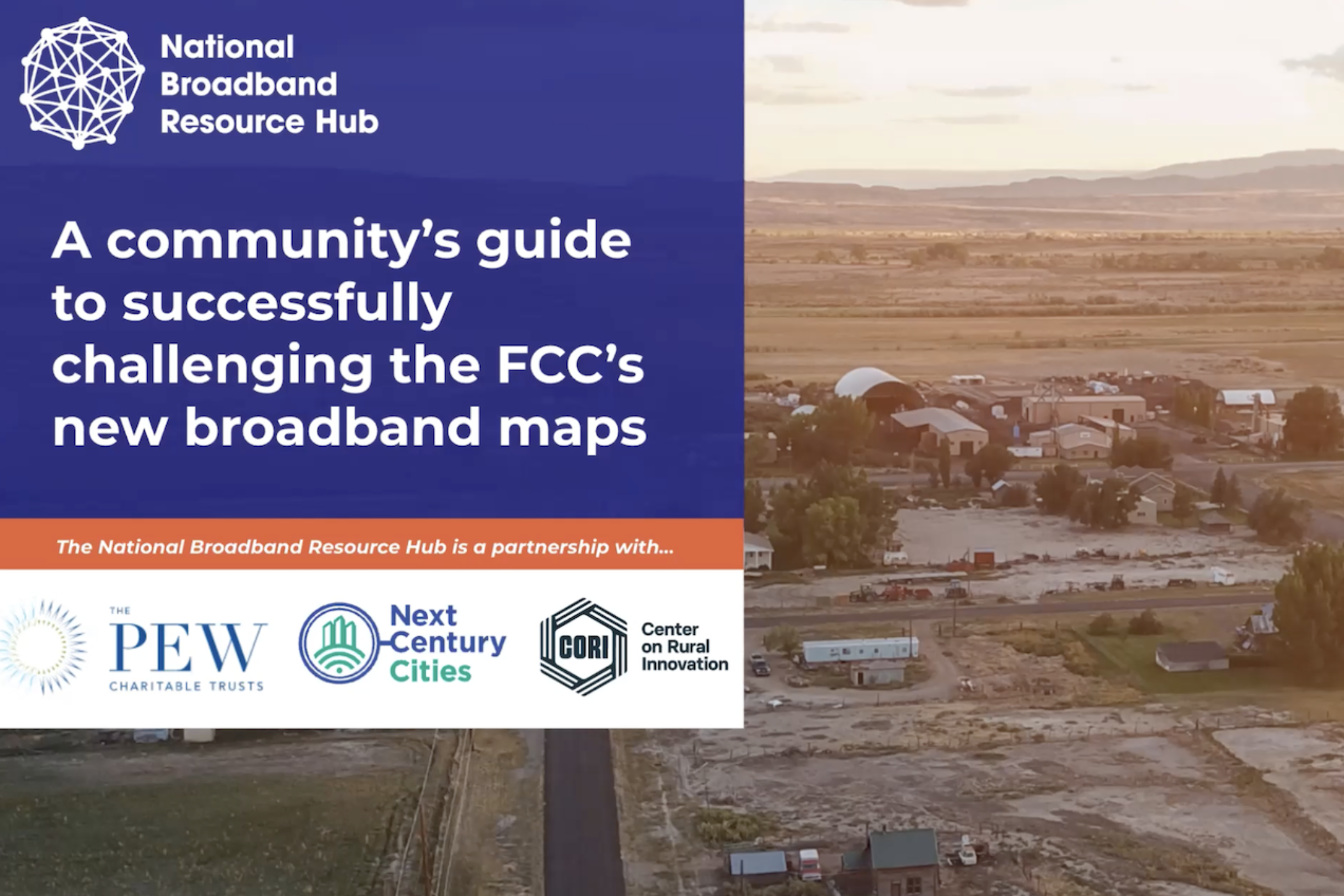State and local governments and internet providers are all currently grappling with the Federal Communications Commission’s new method for collecting, updating, and challenging broadband service data as it overhauls its existing information products. The FCC’s process is new and challenging — many communities and public-sector leaders are still creating a plan to engage in the process.
The National Broadband Resource Hub partners — the Center on Rural Innovation (CORI), The Pew Charitable Trusts, and Next Century Cities — hosted a webinar for leaders from across the country to outline what they know, and what they don’t know, about the mapping process. The event also featured advice about navigating the FCC’s portal and avoiding common pitfalls.
Here are the top five takeaways from that webinar, which you can watch above:
1. Every community should be planning on engaging in the mapping process — it is critical for states to get their fair share of Broadband Equity, Access, and Deployment (BEAD) funding, for public officials to hold providers accountable, and for communities to track and meet their broadband deployment goals.
2. The most urgent thing communities can do is participate in the FCC’s fabric challenge to identify and catalog broadband-serviceable addresses. This will ensure communities can be accurately represented when the National Telecommunications and Information Administration makes its state-by-state BEAD allocations.
3. The FCC’s portal is not necessarily intuitive. Start watching the webinar at the roughly 16-minute mark to see Dustin Loup from the Marconi Society walk through screenshots of the portal, pointing out common pitfalls users can encounter along the way.
4. States will likely create separate processes for challenging the FCC maps, and challenging BEAD eligibility with the NTIA, because those agencies are going to have different burdens of proof for what data they will accept.
5. There are still many unknowns about how federal agencies and states will set up mapping challenge processes for the FCC maps and NTIA eligibility. But the Hub partners are here to help you track everything. Sign up to follow updates on www.BroadbandHub.org and participate in the community conversations page to ask questions, get answers — or to confirm that answers are not yet available.
Interested in learning more?
The National Broadband Resource Hub is a resource for government officials, community leaders, and policy experts to share ideas and build on best practices. State expertise from Pew Charitable Trusts, local perspectives through Next Century Cities, and rural success stories from CORI will bring new resources to the Hub that will be useful in various stages of broadband planning and implementation so that local and state leaders find the support that they need to navigate the complex federal funding application processes that lie ahead.
